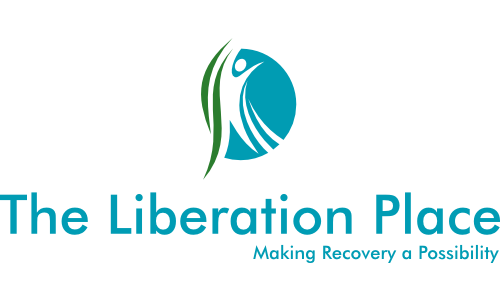Problem Solving
First and foremost, the ability to solve problems is a pretty basic skill that everyone really needs to have in their locker to build the life they want to live. Whether you are someone who struggles with emotion regulation, addiction, or mental health issues, or you feel completely secure within yourself, Problem Solving is an essential skill to have no matter who you are. It is 100% another one of the really important core skills that are necessary for improving our ability to regulate our emotional state or solve the emotionally overwhelming problems we are experiencing at any given point in time.
In order for this skill to be an effective intentional action that we take, first of all, we have to accept the fact that solving the problems we are experiencing in the situations we are struggling with can and will change the difficult emotions we are struggling with. Problem solving means TAKING ACTION!! Not thinking about the problem, it means doing something about it. It’s sometimes the case that we know our emotions are in line with the facts, and we see that there is an action we can take that will solve the emotional problem we are experiencing. However, we refuse to take this action because of the story we are telling ourselves about what will happen if we take this problem-solving step. The fear of taking the action stops us dead in our tracks, so we have to be willing to take these actions in order to see the benefits of the Problem-Solving Skills.
“Problem solving means TAKING ACTION!! Not thinking about the problem, it means doing something about it.”
~Steven Morris RP.
In essence, Problem Solving is basically the first step in changing difficult situations. Problem Solving is needed when acting on an emotion using the other emotion regulation skills we’ve discussed have not worked or it’s likely for them to be ineffective. Problem solving is a coping strategy that increases the probability of getting through a particular situation without increasing your emotional stress or making things worse in the external world. It is no different to any of the other DBT Skills in that it requires a conscious and focused effort to develop our ability to use it in everyday life. Before we can start using the problem-solving skills, we have to recognize that there is a problem to be solved. The following is a list of the seven basic steps involved in the Problem Solving skill from a DBT perspective. Use this list to practice problem solving when it's not necessarily needed, so the process will become ingrained in your habits, and an available skill to use when it is needed in an emotional experience.
Step One
Observe and Describe the Problem Situation.
As with everything we do in Dialectical Behaviour Therapy, mindfulness is an essential part of the process. If we are not able to notice the level of distress as it enters our system, we blend with the part of us that's been activated, and we act in the way this part believes we have to act, so we can cope with the current emotional experience. This reaction is often tied to a black and white, all or nothing perspective which removes the opportunity to work with our parts and produce an effective outcome for the situation we find ourselves in. Observe and Describe the part that’s experiencing the problem to unblend from it’s desire to react, and open the possibility to do something more effective than we might normally do.
Step Two
Check that the facts are in line with actuality.
Checking the facts is an extremely essential, and at the same time, very difficult skill to develop. This is usually because at the time of activation, we are blended with a part of our personality that has a rigidity tied to its opinion simply being a fact. Sometimes this opinion is accurate, and sometimes it is not, so we have to develop the ability to know the difference between what is factual, and what is a narrative that’s connected to a childhood story. Keep in mind, just because something is identified as a childhood story doesn’t mean its not justified in the current situation. Checking the facts gives us the opportunity to step back from the story and evaluate the situation from an objective point of view. If it's possible, this is a good time to use the worksheets associated with checking the facts to make sure we're not participating in a childhood re-enactment and confirm that our feelings are in line with what’s actually happening, right now.
Step Three
Identify Your Goal in Solving the Problem
Knowing what we want to achieve in any situation is incredibly important. When establishing the direction you are trying to go, make sure its in line with Living the Life you Want to Live, according to your true core values and beliefs, and at the same time, keep it simple. Make sure it’s something you can really achieve and it’s not a goal that’s simply out of your reach. Naturally, the ultimate goal is to reduce our painful emotional experiences, but if you notice there is a part of you that’s trying to remove them completely, this is something that cannot be accomplished, and we are fighting a losing battle right from the start. The major task for this step is to identify what you think needs to happen for you to feel emotionally and physically better about the situation, not remove the emotional pain completely. In other words, what can you do to keep going in the direction you want to go, while achieving the outcome you want to achieve?
Step Four
Brainstorm Lots of Solutions
This is where the support structure we developed as part of our foundational work can really come into play. Talk about the problem you are experiencing with other people so you can come up with as many different ideas as possible. Remember, this needs to be done from an objective perspective, not the rigidity of an active schema. We have to set aside our judgements to see things from a Dialectical perspective, and this can be a difficult thing to do. Try to access your state of Wise Mind prior to a conversation involving the Problem Solving skill. Solutions can often be thought of as one or more actions that lead to the ultimate goal we are trying to get to, and when brainstorming with others, all ideas are welcome. Try not to evaluate the possible outcomes while participating in a brainstorming conversation, as this is often connected to the rigid perspective of a particular story and leads to a rejection of something that may support us in achieving what we are trying to achieve.
Step Five
Choose a Solution That Fits the Goal and Is Likely to Work.
Talking about your struggles with the people who are part of your support network is a fantastic way to work through emotionally activating situations. However, while brainstorming this way can sometimes be a fun activity to participate in, providing lots of insight for why things are the way they are, it’s definitely not the be all and end all we may think it is. The point of brainstorming is to generate an effective solution to a problem where previously there was no solution that was immediately available to you. Especially given the emotional experience you were having at that time. Once you’ve generated lots of different ideas, it is time to identify which one, or maybe two, are the best for you to implement in your behavioural responses. This is often a good time to use the Pros and Cons skill, that we previously talked about, to weigh up your different options, or to walk yourself into the nonjudgmental state of Wise Mind to get curious about how you really feel at your core.
Step Six
Put the Solution into Action.
The entire enterprise of learning the skill of problem solving is aimed at putting into action an effective solution to the problem at hand, and this means actually taking an action. Sometimes this might be an opposite action to the one we would normally take, and sometimes it might be something that activates a large amount of fear in our system. Ultimately all of the insight we gain through brainstorming, checking the facts, accessing Wise Mind, or performing a Pros and Cons exercise is worth very little in the grand scheme of things if we don’t take an action to Live the Life we Want to Live. Experiential Avoidance is a very real thing. It shows up in many different ways. Sometimes its obvious, and sometimes not so much. For me, it would often show up in my philosophical and intellectual exploration into reasons why I do the things I do. This constant exploration into insight and “knowing” actually keeps me experientially avoidant from taking physical action, and trapped in a thinking mode that never lets me change. Insight is important, but without action, in actuality, it doesn’t help us Live the Life we Want to Live.
Step Seven
Evaluate the Results of Implementing the Solution.
Once the action has been taken, it’s important to evaluate its effectiveness and make adjustments to what we did, right now, in future situations that activate the same emotional response. Noticing what we did that went well, what it was that had us act in ways that were effective for Living the Life we Want to Live is the essence of the DBT skill called Noticing Positive Events. Making adjustments for what we can do differently in the future is all wrapped up in Planning Ahead to Build Mastery. Hopefully you are starting to see how the DBT Skills program gives us the skills we need to Live the Life we Want to Live, every single day, we just have to use them. When evaluating the previous action, ask yourself, am I satisfied with the results of my problem solving? Do I feel better about my situation than I did before? Were there any negative outcomes for myself or for others?
In the PDF at the bottom of this page you will find a worksheet thats intended to help you go through the process of Problem Solving. Take some time to complete it, and at the same time, think about the circumstances of your life when you have known that a solution might work, but then you did not follow through with implementing it. Remember that if this happens to you now, it is just another problem to solve. See if you can figure out whether the thing that stopped you taking the Problem-Solving action was tied to being able, capable, willing, or something else completely different. Journal about this to see if you can troubleshoot how to overcome such problems in implementing solutions in the future.
Download the PDF of this page
Follow us on Social Media





